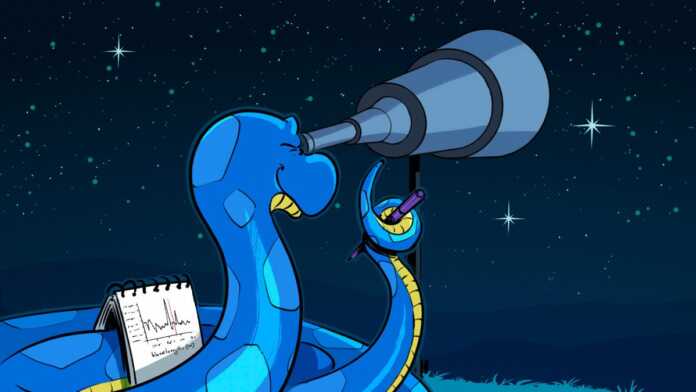We show how you can use the Jdaviz Python library to examine distant objects using spectral analysis – without any programming work.
The fact that the US President presents the first results of a scientific experiment is not an everyday occurrence at NASA either. At the James Webb Space Telescope (JWST), however, Joe Biden insisted on presenting one of the first images to the public. They quickly made the rounds in all media: the colorful cliffs and mountains from the Carina Nebula and the deep field image from the galaxy cluster SMACS 0723, for example. The images show the leap in technology since the Hubble telescope was launched in 1990. In order to answer the scientific research questions that the JWST is intended to help with, however, one has to look less at the images and more closely at the raw data from the sensors.
Not only are the instruments new, a lot has also happened in the provision of data since 1990: You don’t have to be employed by NASA, ESA or a US university to get the first data. Many of the results collected in the first five months are available to everyone free of charge and freely accessible on the Internet. And even better: In line with the data, the Space Telescope Science Institute (STScI) published the Python library Jdaviz before the start of the JWST, with which the data can be visualized and evaluated in a graphical interface.
The library is not a gimmick, but a serious tool kit for professionals. As an example, we show how you can get the first raw data with ready-made tools without programming work and how to identify the composition of a distant star using spectral analysis. First of all: The path shown below is only one type of evaluation for one type of data from a JWST instrument. Even if you only confirm what is already known in your first research and cannot directly contribute new findings to the state of research, this is a worthwhile excursion – and you get an impression of how astronomy works today.










